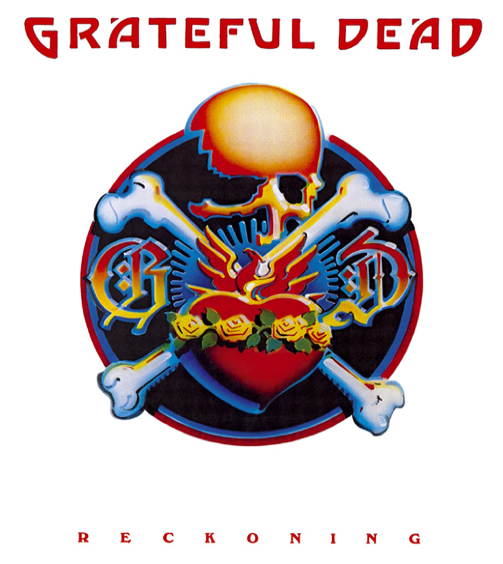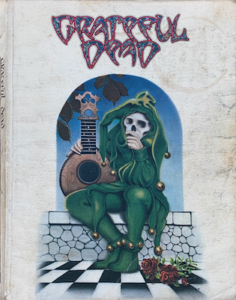
Concert of the week in Grateful Dead history: October 11, 1980 (Listen Now)
Ripple in still water, when there is no pebble tossed nor wind to blow.
By The Deadhead Cyclist
For Week
41
After three years at a high school in Anaheim, CA and two years at UCLA, my life had become as stagnant as the bumper-to-bumper traffic I found myself sitting in on the Santa Ana freeway during the fall of ’74, while waiting for my transfer to UC Santa Cruz to come through. Even against the backdrop of inexperience during the waning months of my teenage years, I had learned enough to allow intuition to lead the way in making my first big grownup decision: moving from Southern to Northern California. There is no way I could have anticipated the ripples this life-changing – dare I say “seismic” – shift would create that continue to reverberate decades down the road.
Ripple #1 arrived during the first quarter at my new school, when I set aside the alto saxophone I had played in the UCLA jazz band – coincidentally at the same basketball games that starred a certain 6-foot-11-inch, then-red-haired All American center, named Bill Walton – and began learning to play the guitar. A friend in my new dorm had loaned me a Yamaha acoustic guitar, and I spent countless hours hanging out in the majestic Redwood forests of the Santa Cruz campus teaching myself songs from the now-classic Grateful Dead songbook that included tunes from the Workingman’s Dead and American Beauty albums. That guitar became such an obsession that I developed blood blisters on my fingers! Fittingly, the first song I learned was Ripple.

During a visit home that same year, anxious to show off my newly acquired guitar chops, I “performed” Ripple for my parents, after which my ever-perceptive and uncommonly open-minded dad asked: “How can there be a ripple in still water with no pebble or wind?” It was no secret that my parents had grown increasingly concerned after learning inadvertently that I had been “experimenting” (a term I dislike immensely) with psychedelics as part of my immersion into the Grateful Dead, Hippie culture that was still alive and well in the Bay Area at that time. So, I understood the question as being largely rhetorical, as the guy paying my tuition believed he already knew the answer: Under the influence of psychedelic drugs, one might hallucinate a ripple in still water. And, of course, that answer, while incomplete, is not incorrect.
But as is often the case with the poetry of the Grateful Dead where “things we’ve never seen will seem familiar,” the existence of an inexplicable ripple in still water demands further exploration, and certainly runs deeper than a simple hallucination. In keeping with the deadaphoric theme, we must look beneath the surface of the still water to find the answer. Let’s reframe the question like this:
Is it possible to observe or even create something that was once thought to be impossible?
The answer to that question is a resounding YES! There are examples aplenty, but to pick a convenient one, just imagine how bygone generations – even from the very recent past – would have responded when asked if one day it would be possible for everyone to own a device fitting in the palm of your hand that could call (with video, if desired) or send an instant message to anyone in the world at any time, track your location, supply explicit directions from any point of origin to any destination, and literally provide access to more information than all of the libraries in the world, combined. “Impossible,” they surely would have said. And yet, we all know that the “impossible” is now not only possible, but taken completely for granted.
One can only speculate whether Einstein would have been a Deadhead if he had lived at a different time. But an affinity for imagination was most certainly a common thread that ran between Einstein and the Grateful Dead.
The “secret sauce” that can make ripples in still water isn’t a hallucinogenic drug but, rather, something we all possess in abundance: imagination. World-famous physicist Albert Einstein, whose theory of relativity revolutionized modern science, and whose name is synonymous with the highest human expressions of intelligence and wisdom spoke to this subject.
Imagination is more important than knowledge. For knowledge is limited to all we now know and understand, while imagination embraces the entire world, and all there ever will be to know and understand.
In other words, according to Einstein (and who are we to disagree with someone who is literally an “Einstein”), that which we imagine is more valuable than what we know. Therefore, our ability to imagine the existence of a “ripple in still water” actually supersedes the knowledge that there must have been a “pebble tossed” or a “wind to blow.” Why this is so significant is that it opens up the possibility of an innovative way that a ripple could have been created. And out of that possibility, wonderful things can materialize.
In 1965, a ragtag group of misfits formed a band that drew from an unprecedented blend of musical influences, including rock, folk, country, bluegrass, rhythm and blues, jazz, and even gospel. Despite their unorthodox, at times reckless approach to running their business – leading to their dis-banding in 1974 – they ultimately became the godfathers of the “jam band” musical genre, and arguably the most beloved and successful musical group in history. In a collision of prescience and luck, the band broke ranks with rigidly established conventional wisdom in the music industry and allowed their fans to freely create and share recordings of their concerts, leading to a musical archive, and legacy, unprecedented in music history.
If that’s not an example of a ripple in still water, I don’t know what is!
One particularly outstanding recording is part of an innovative run of 15 shows the Dead performed at San Francisco’s Warfield Theater, during the Fall of 1980. This memorable chapter in Grateful Dead history was unique in that the band returned to its roots and played an acoustic set, followed by two electric sets at each concert. There was an indescribably magical quality to these acoustic sets, captured on tape by Betty Cantor-Jackson and released on the album, Reckoning, which also included a handful of tunes from the subsequent shows at New York’s Radio City Music Hall.
This format gave Deadheads a chance to hear some of the band’s acoustic tunes live for the first time, most notably Ripple, played at the conclusion of each of these unique opening sets. T.W.I.G.D.H. features the 10/11/80 show, the Deadhead Cyclist’s pick as the best of the 15 concerts.
One can only speculate whether Einstein would have been a Deadhead if he had lived at a different time in history (he died in 1955). But an affinity for imagination was most certainly a common thread that ran between Einstein and the Grateful Dead. Perhaps this provides a clue to the as yet unsolved mystery of the indomitable devotion Deadheads continue to feel for the Dead decades beyond their final curtain call.
Each of us is blessed with a unique ability to engage in and contribute to the collective imagination of humanity. Individually and collectively we have the capacity – perhaps even the obligation – to create ripples in still water. The Grateful Dead did so with an innovative genre of music; Einstein helped us understand the way the universe works. What “path is for your steps alone?”
Concert of the week in Grateful Dead history: October 11, 1980 (Listen Now)
Subscribe and stay in touch.